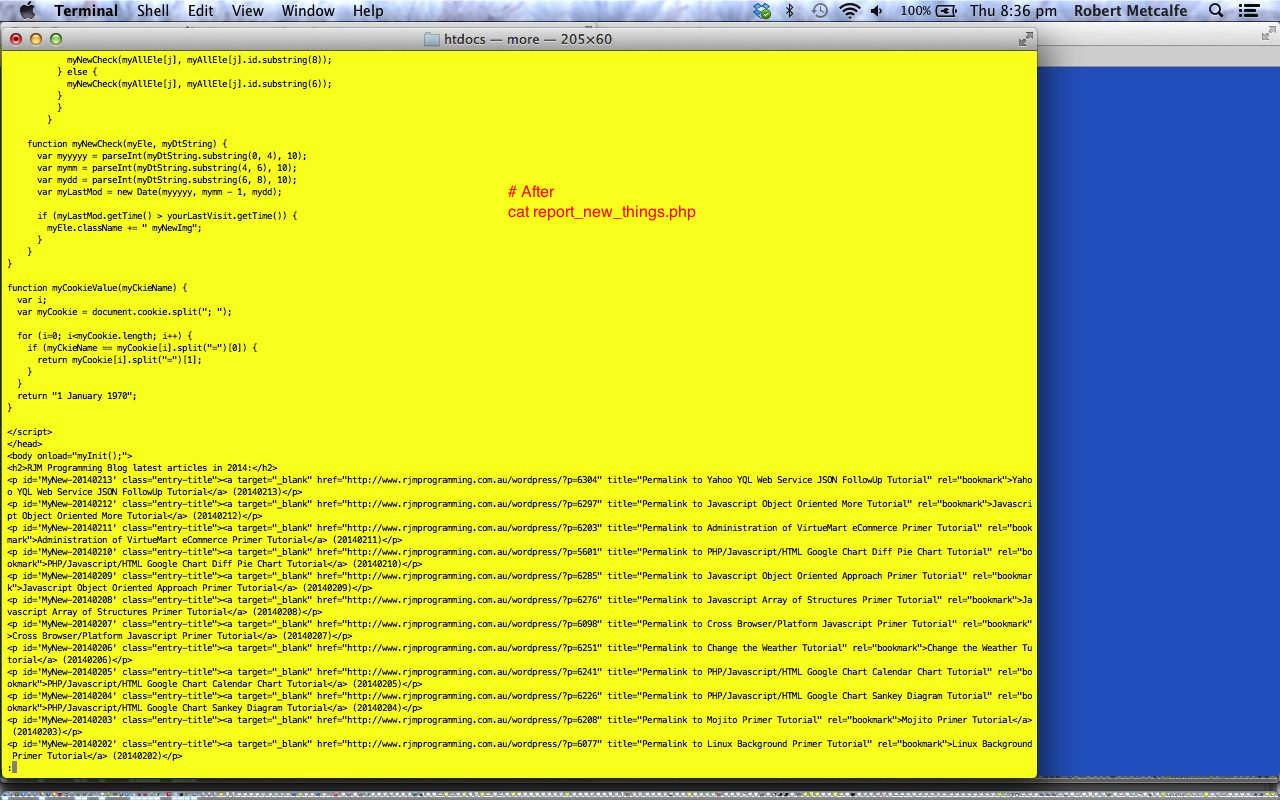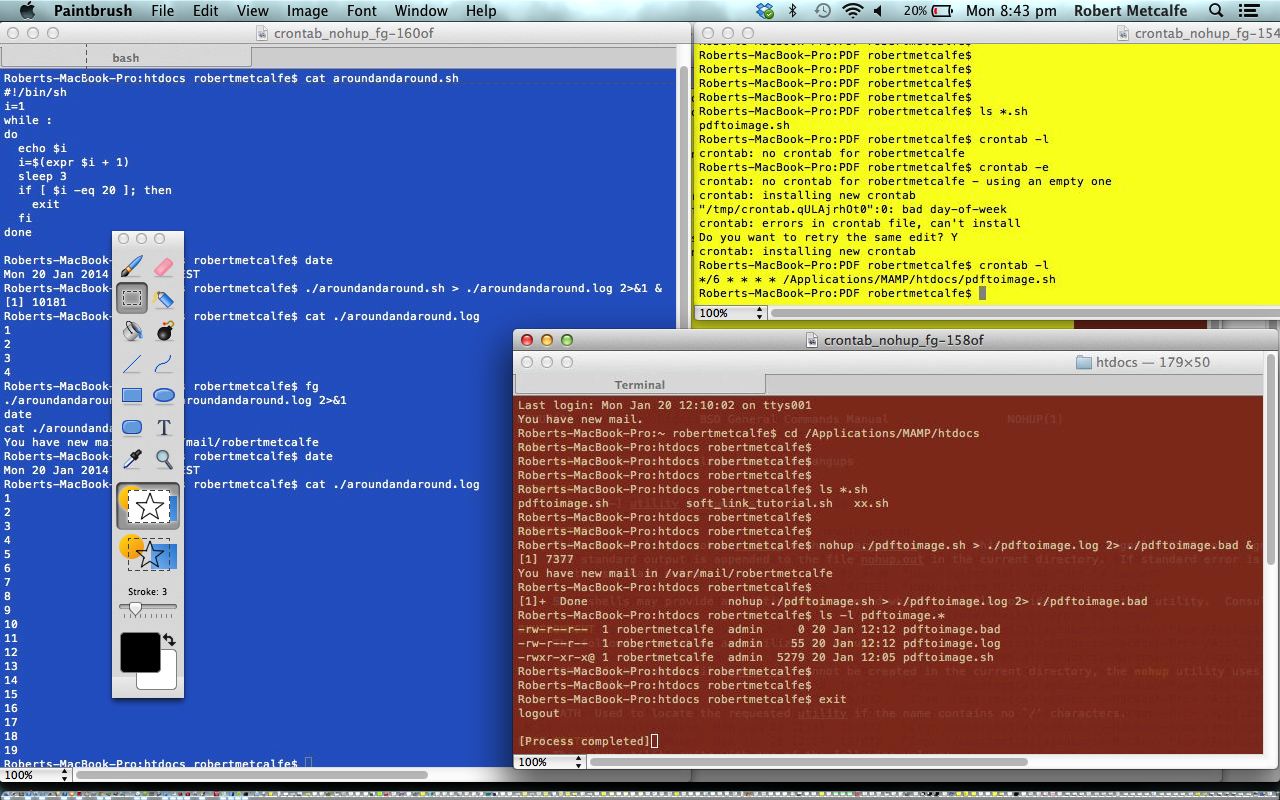Linux (or Unix) is a command line environment that supports interactive and non-interactive task management. Often non-interactive tasks are known as batch processes, often intended not to rely on any user intervention, unless there is a problem.
Today, in this tutorial (which builds on Linux Background Primer Tutorial), we see the power of combining Curl under the auspices of crontab to run a webpage piece of functionality once a day at a specified time.
Some CMS systems like Drupal use crontab to perform actions on the database at regular intervals.
For Windows systems you might want to look at Windows Task Schedular for similar functionality.
Linux has several approaches to activating a task, some (not mentioning all the ways one process can fork or launch another process) of them being:
- interactively (from the command line)
- kick off a process from command line, and place in in the background, without supervision, necessarily, via the suffix &
- kick off a process without supervision, necessarily, via crontab
- kick off a process in the background (without supervision, necessarily) via nohup
- kick off a process from command line, and place it in the background, without supervision, necessarily (and optionally change its state via fg and bg)
The previous Linux Background Primer Tutorial is well worth reading below.
Linux (or Unix) is a command line environment that supports interactive and non-interactive task management. Often non-interactive tasks are known as batch processes, often intended not to rely on any user intervention, unless there is a problem.
In the pre-GUI days batch processes were very prominent, but they still are today, as far as actually getting things done. It is just that the more glamorous activities pass our notice more, but there are servers out there churning away with batch processes, dreaming of the day when they’ll work out how they can make that cup of coffee for you in the morning. And do we ever offer them even a cup’o’tea … it’s a disgrace, so it is.
Linux has several approaches to activating a task, some (not mentioning all the ways one process can fork or launch another process) of them being:
- interactively (from the command line)
- kick off a process from command line, and place in in the background, without supervision, necessarily, via the suffix &
- kick off a process without supervision, necessarily, via crontab
- kick off a process in the background (without supervision, necessarily) via nohup
- kick off a process from command line, and place it in the background, without supervision, necessarily (and optionally change its state via fg and bg)
The last four above are often best performed on a shell script, whether that be a Bash, Korn, Bourne or Cshell script. There are some good general tips for batch process scripts:
- never assume where you are, rather specify the directory to be in, via “cd”
- never assume that the environment variables will be exactly the same as for an interactive session
- be more thorough to log errors and log activity to files to see, later, what happened
- it is not good to proceed on errors (unless you have set up independent means of checking) because there will be no human to interactively decide that the problem should not stop the job proceeding
- pretty obviously, don’t expect anybody to answer an interactive entry requirement (but you can simulate lots of interactive input via redirected standard input eg. < [filename])
Take a look at some example Linux background processing at this tutorial. In it you will see some crontab work where the parameters are (as explained here … thanks):
MIN = Minute 0-60
HOUR = Hour [24-hour clock] 0-23
MDAY = Day of Month 1-31
MON = Month 1-12 OR jan,feb,mar,apr …
DOW = Day of Week 0-6 OR sun,mon,tue,wed,thu,fri,sat
COMMAND = Command to be run Any valid command-line
The */6 * * * * /Applications/MAMP/htdocs/pdftoimage.sh of our usage runs /Applications/MAMP/htdocs/pdftoimage.sh every six minutes.
If this was interesting you may be interested in this too.
If this was interesting you may be interested in this too.




